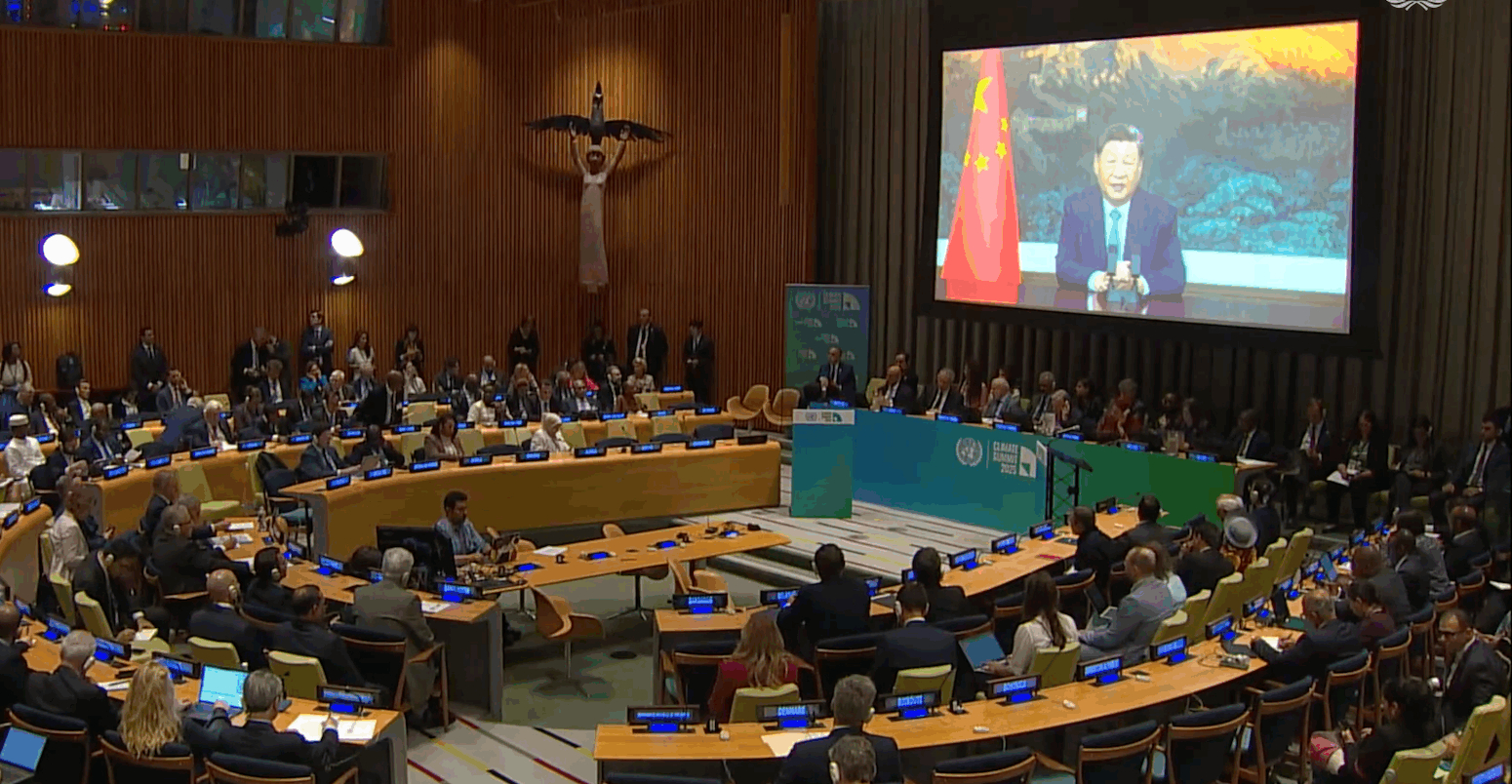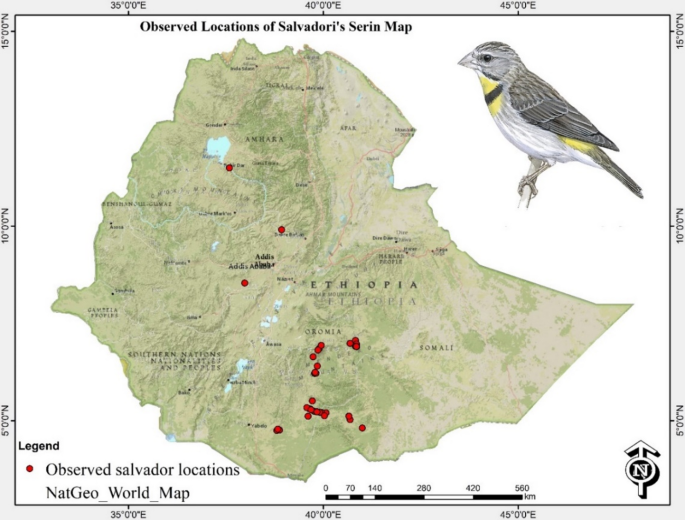Report on the Rescission of U.S. Climate-Related Financial Risk Guidance and its Implications for Sustainable Development Goals
1.0 Executive Summary
A recent policy reversal by United States federal banking regulators marks a significant departure from integrating climate considerations into financial oversight. The Federal Reserve, Federal Deposit Insurance Corp. (FDIC), and the Office of the Comptroller of the Currency (OCC) have rescinded the “Principles for Climate-Related Financial Risk Management for Large Financial Institutions.” This action presents considerable challenges to the advancement of several Sustainable Development Goals (SDGs), most notably SDG 13 (Climate Action), SDG 17 (Partnerships for the Goals), and SDG 11 (Sustainable Cities and Communities).
2.0 Background of the Policy Reversal
The decision formally withdraws guidance established in October 2023, which was designed to assist large financial institutions in managing climate-related monetary risks.
2.1 Key Developments
- October 2023: The “Principles for Climate-Related Financial Risk Management” were established to provide a high-level framework for banks with over $100 billion in assets.
- March 2025: The OCC initiated the withdrawal by ending its participation in the framework.
- October 16, 2025: The Federal Reserve, FDIC, and OCC jointly announced the complete rescission of the guidance.
2.2 Stated Rationale
The regulators provided the following reasons for the withdrawal:
- Existing risk management standards are sufficient for institutions to address all material risks, including emerging climate-related risks.
- The specific climate-focused principles were deemed unnecessary and could potentially distract from the management of other significant risks.
3.0 Impact on Sustainable Development Goals (SDGs)
The rescission of this guidance directly impacts the United States’ progress toward key SDGs by weakening the institutional framework for climate resilience and sustainability.
3.1 SDG 13: Climate Action
This policy reversal is in direct opposition to the objectives of SDG 13, which calls for urgent action to combat climate change and its impacts.
- Target 13.2: The decision undermines the integration of climate change measures into national policies and financial planning. By removing specific guidance, regulators reduce the impetus for the financial sector to systematically address climate risks.
- Financial System Resilience: Critics, including former Treasury officials, argue the move threatens financial stability by ignoring the systemic threat climate change poses, leaving the economy more vulnerable to climate-related shocks.
3.2 SDG 17: Partnerships for the Goals & SDG 16: Peace, Justice and Strong Institutions
The action is part of a broader trend of withdrawal from international cooperation on climate and sustainability, affecting global partnerships and institutional integrity.
- Retreat from Global Coalitions: U.S. financial regulators, including the Federal Reserve, FDIC, and Treasury Department, have exited the Network of Central Banks and Supervisors for Greening the Financial System (NGFS), an international coalition dedicated to mobilizing green finance.
- Weakened Institutional Commitment: This move, alongside the U.S. exit from the Paris Agreement, signals a weakening of strong, accountable institutions (SDG 16) committed to addressing global challenges and sustainable development. Critics have labeled the reversal a “purely political move,” questioning the stability of regulatory policy.
3.3 SDG 11: Sustainable Cities and Communities & SDG 7: Affordable and Clean Energy
The broader policy environment, of which this decision is a part, poses risks to community resilience and the transition to clean energy.
- Community Vulnerability (SDG 11): The lack of regulatory pressure on banks to manage climate risk leaves homeowners, businesses, and communities more exposed to the financial consequences of extreme weather events, undermining efforts to build resilient communities.
- Clean Energy Transition (SDG 7): The rescission occurs within a context of federal funding pauses for climate programs, which could impede investment in and development of affordable and clean energy infrastructure.
4.0 Conclusion
The withdrawal of climate-related financial risk guidance by U.S. federal regulators represents a significant setback for the nation’s commitment to the Sustainable Development Goals. By deprioritizing climate risk within the financial sector, the decision directly challenges progress on SDG 13 (Climate Action). Furthermore, it reflects a broader disengagement from international collaboration, impacting SDG 17 (Partnerships for the Goals), and raises concerns about the long-term resilience of communities and financial institutions, affecting SDG 11 and the broader sustainable development agenda.
Analysis of Sustainable Development Goals in the Article
1. Which SDGs are addressed or connected to the issues highlighted in the article?
-
SDG 13: Climate Action
- The entire article revolves around the management of climate-related financial risks. The withdrawal of the “Principles for Climate-Related Financial Risk Management” by federal regulators is a direct action related to national climate policy and its integration into the financial sector. Critics in the article state that “climate change poses a destabilizing, systemic threat to the financial system,” directly linking financial regulation to climate action.
-
SDG 8: Decent Work and Economic Growth
- The article discusses the potential impact of rescinding the climate risk guidance on the stability of the financial system. A former Treasury official is quoted saying the decision “threatens the soundness of the country’s banks and [their] financial stability.” A stable financial system is a prerequisite for sustainable economic growth, which is a core component of SDG 8.
-
SDG 11: Sustainable Cities and Communities
- The article highlights the vulnerability of communities to climate change. It quotes a warning that the decision “leaves homeowners, businesses, and communities vulnerable as extreme weather events increase.” This directly connects the financial policy to the resilience and safety of human settlements, a key focus of SDG 11.
-
SDG 17: Partnerships for the Goals
- The article explicitly mentions the U.S. withdrawal from international collaborations aimed at addressing climate change and its financial implications. It notes the exit of the Federal Reserve, FDIC, and Treasury Department from the “Network of Central Banks and Supervisors for Greening the Financial System (NGFS)” and the country’s “second exit from the Paris Agreement.” These actions represent a retreat from global partnerships for sustainable development.
2. What specific targets under those SDGs can be identified based on the article’s content?
-
Under SDG 13 (Climate Action):
- Target 13.2: Integrate climate change measures into national policies, strategies and planning. The article’s central theme is the rescission of the “Principles for Climate-Related Financial Risk Management,” which was a clear attempt to integrate climate considerations into national financial regulatory policy. The withdrawal is a reversal of progress on this target.
-
Under SDG 8 (Decent Work and Economic Growth):
- Target 8.10: Strengthen the capacity of domestic financial institutions to encourage and expand access to banking, insurance and financial services for all. The article discusses threats to the “soundness of the country’s banks” and “financial stability.” A stable and sound financial system, which requires managing all material risks including climate change, is fundamental to strengthening the capacity of financial institutions. The withdrawal of guidance weakens this capacity.
-
Under SDG 11 (Sustainable Cities and Communities):
- Target 11.5: By 2030, significantly reduce the number of deaths and the number of people affected and substantially decrease the direct economic losses relative to global gross domestic product caused by disasters… The article directly relates the policy change to increased vulnerability, stating it “leaves homeowners, businesses, and communities vulnerable as extreme weather events increase,” which directly correlates with the economic losses and people affected by climate-related disasters.
-
Under SDG 17 (Partnerships for the Goals):
- Target 17.16: Enhance the global partnership for sustainable development, complemented by multi-stakeholder partnerships… The article details the U.S. withdrawal from the NGFS, a global coalition to “mobilize green finance and develop recommendations for climate-risk management,” and the Paris Agreement. This is a direct step away from enhancing global partnerships on sustainable development.
3. Are there any indicators mentioned or implied in the article that can be used to measure progress towards the identified targets?
-
For Target 13.2:
- Indicator (Implied): The existence and enforcement of national policies and guidance for managing climate-related financial risks. The article is centered on the “Principles for Climate-Related Financial Risk Management for Large Financial Institutions.” The establishment of these principles in 2023 was a positive measure, while their rescission in 2025 is a negative one.
-
For Target 8.10:
- Indicator (Implied): Assessments of financial system stability and soundness that incorporate climate-related risks. The article implies this through quotes about the decision threatening “financial stability” and climate change posing a “systemic threat to the financial system.” Measuring the exposure of large banks (over $100 billion in assets) to climate risks would be a relevant indicator.
-
For Target 11.5:
- Indicator (Implied): Data on economic losses and the number of homeowners, businesses, and communities affected by extreme weather events. The article’s warning that these groups are left “vulnerable” suggests that tracking the real-world impact of such events is a key measure of resilience.
-
For Target 17.16:
- Indicator (Implied): National participation in international environmental and financial agreements. The article explicitly names the “Network of Central Banks and Supervisors for Greening the Financial System (NGFS)” and the “Paris Agreement” as international bodies from which the U.S. has withdrawn, serving as a direct, measurable indicator of participation in global partnerships.
4. Table of SDGs, Targets, and Indicators
| SDGs | Targets | Indicators Identified in the Article |
|---|---|---|
| SDG 13: Climate Action | 13.2: Integrate climate change measures into national policies, strategies and planning. | The existence or rescission of national guidance like the “Principles for Climate-Related Financial Risk Management for Large Financial Institutions.” |
| SDG 8: Decent Work and Economic Growth | 8.10: Strengthen the capacity of domestic financial institutions. | Assessments of financial system stability and the soundness of banks, considering their management of systemic threats like climate change. |
| SDG 11: Sustainable Cities and Communities | 11.5: Reduce the economic losses and number of people affected by disasters. | The vulnerability of homeowners, businesses, and communities to economic losses from extreme weather events. |
| SDG 17: Partnerships for the Goals | 17.16: Enhance the global partnership for sustainable development. | U.S. membership and participation in international climate and finance coalitions such as the NGFS and the Paris Agreement. |
Source: esgdive.com







